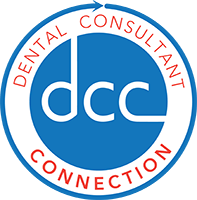Every dental administrator and team member who deals with insurance in their practice should read this – then call Lois Banta and thank her for sharing this! Her tips, reommnendations and information are extremely valuable. Thanks for the gold nuggets Lois! Robin Morrison

Lois Banta, CEO, President and Founder of Banta Consulting, Inc. & Owner and CEO of The Speaking Consulting Network
So many terms and conditions and clauses and limitations and so little time! There are numerous limitations and clauses on the average dental plan. Some of those exclusions and limitations make it difficult to be helpful and informative with the average dental patient. Furthermore, the patient has the misinformation and misunderstanding that we have a direct hotline and great relationship with their insurance carrier. Nothing could be further from the truth. The patient’s insurance company has zero responsibility in communicating with a dental practice. The contract is with the patient…not the dental practice. This is one of the most common concerns a dental practice has in working with a patient regarding their dental benefits. I always encourage a practice to create an environment of “patient ownership” when discussing benefits and limitations. It is important for the patient to know the limitations of their plan in order for us to help them and help you resolve claims. I have included the definitions of various clauses and limitations in this blog. Understanding patient dental benefit plans 101! Listed below are several of the contract limitations and exclusions found in various plans. Know that the limitations and exclusions are not placed there by the insurance company … they are placed there by the employer. Additionally, when discussing benefits with the patient, be sure to communicate with them that they are your “secret weapon” in maximizing their dental benefits.
Coverage year: Standard coverage years are calendar or fiscal. Some unions and schools, for example, set the coverage year fiscally i.e.; coverage goes from April 1 to March 31.
Maximums: Yearly maximum dollars allowed each year can vary from $500, $750, $1000 and possibly more.
Effective date: Knowing the effective date of coverage is important because it coincides with any waiting periods on dental treatment i.e.; 6 month wait on major dental treatment etc.
Waiting periods: Knowing the waiting period for certain procedures is important so that the patient has a more accurate determination of out of pocket expenses i.e.; if the patient has a crown diagnosed but there is a 12 month wait for major dentistry then, the patient’s out of pocket would be 100% instead of the standard estimated 50%. This does not mean you should encourage the patient wait on their needed dentistry until their benefits kick in.
Frequency limitations: It is good to know frequency limitations for certain procedures. The standard frequency limitations written on most contracts are preventive frequency (the most common preventive frequency is: preventive visits covered two times per year or each six months. It is vital to clarify when the coverage frequency limit is listed as two times per year. Does this mean two times in a calendar year or two times in a 12-month period? Replacement of major dentistry frequency is also a little tricky. Standard frequency limitations on replacement of major dentistry are once each five years. However, the new trend is replacement of major dentistry covered once each seven or 10 years. Sometimes, there are periodontal frequency limitations. For instance, deep scaling and root planing may have a frequency limit of two to five years. Additionally, many contracts are limiting D4910 periodontal maintenance procedures to 24 months. After that, no more D4910 periodontal maintenance coverage. Does any of this mean the patient shouldn’t go ahead with treatment? Absolutely not! Always recommend the dental treatment that is in the best interest of the patient…not the insurance company.
% or fee schedule?: Typically, there are two types of dental plans…ones designed to pay a percentage of an allowable fee and plans designed to pay according to a fee schedule. The percentage of coverage plan is typically divided up into two different categories: {Preventive, Restorative and Major} or {Type I, Type II and Type III}.
Non-Duplication Clauses: The standard definition of “non-duplication clause” is this: If a patient is covered under two plans and primary pays 80% of the claim, the secondary will not duplicate the benefit. So, if the secondary benefit is also 80%, the secondary plan will pay nothing. A new wrinkle in the process that potentially limits the secondary even more. For instance, an additional limitation is sometimes added to the non-duplication clause that deducts the equivalent dollars that the primary plan paid from the secondary maximum.
The CDT code book published by the ADA and the Coding With Confidence book published by Dr. Charles Blair (a must have for every dental practice) has detailed definitions that contain vital information. Please read, understand and comprehend these. When the patient has a better understanding of benefits and limitations, it empowers them to make a difference in resolving their claims issues.
Remember, it is the patient’s responsibility to understand all the limitations and exclusions on their plan. The dental practice educates the team…they, in turn, can covey to the patient their responsibilities with their own dental benefit plan. The patient has a better understanding and the dental practice can increase their effectiveness. The patient also becomes a better informed advocate, which gives the dental practice a greater opportunity to utilize great customer service.
Lois Banta is CEO, President and Founder of Banta Consulting, Inc., a company that specializes in all aspects of dental practice management. Lois has over 35 years of dental experience and consults and speaks internationally. She is also the owner and CEO of The Speaking Consulting Network www.speakingconsultingnetwork.com
Learn more about Lois at https://dentalconsultantconnection.com/consultant_bio4.php
